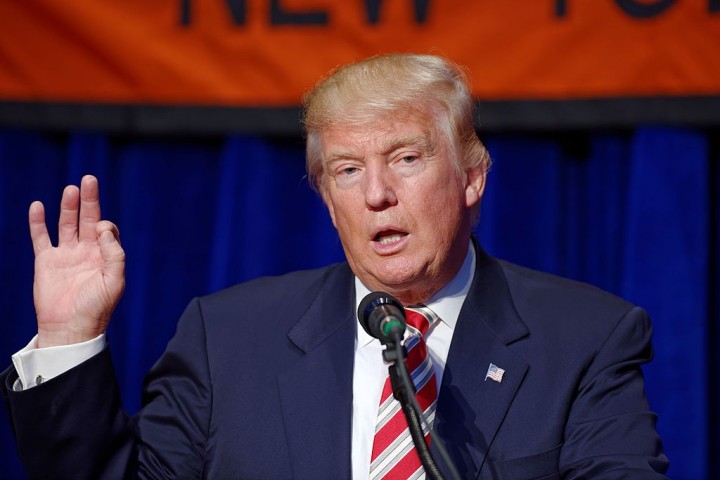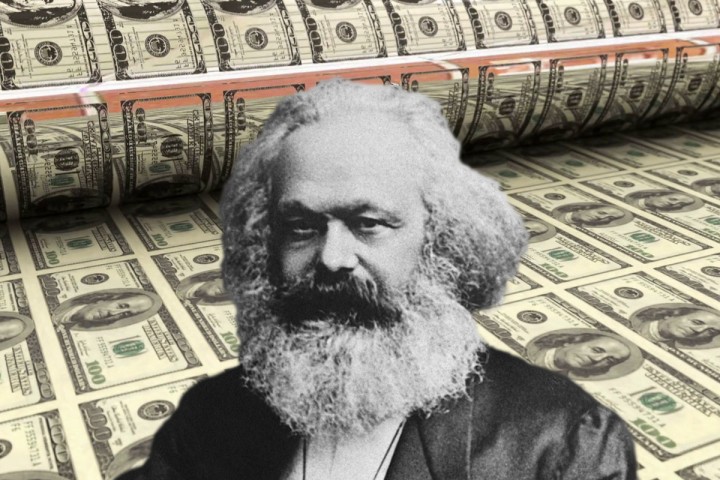Business news headlines recently bemoaned the incidence of “bond yield inversions” in a series of countries as supposedly the harbinger of doom and destruction. Many working-class people were left scratching their heads about what on earth this all means. 10 years after the “Great Recession”, many could be forgiven for thinking that we have been living in permanent recession and things can’t get any worse. The reality is that, while things have not been good in most countries, things can also get far, far, worse. In this article, we will explain why.
What is a bond yield inversion, and why does it matter?
A bond is a term for the purchase of someone else’s debt. In other words, if you buy a bond, you are lending someone money (often a government or large corporation). Bonds are different from stocks, which give the owner a share of the profits of a company.
Bonds can be short term or long term. This refers to the amount of time that you have agreed to lend someone your money. In normal times, the longer the term, the higher the return. Say you lend someone money for 12 months, you might expect a two percent rate of return; but if you lend money for five or ten years you might demand a four or five percent rate. It is natural to demand a higher rate for a longer period because you are taking a higher risk over that time. The value of your loaned money could be eroded by inflation, or you could even lose the entire amount if a company goes bankrupt or if a government goes into default (refuses to pay). Another term for interest rate is “bond yield”. A “bond yield inversion” is the weird and dangerous phenomenon when interest rates on long-term loans are lower than short-term loans.
Why would interest rates for long-term debt become lower than short-term? This is another way of saying that life in the short term is far riskier than life in the long term (even when the risk of inflation and bankruptcy is factored in).
Imagine that you are a billionaire and are trying to figure out what to do with the mountains of cash you have screwed out of the workers (to use technical terminology). If capitalism seems to be doing well, you’ll invest this money in stocks to get a share of the profit made from exploiting workers. This is risky, but gives the best potential return. But if you think that there is going to be a slump, then you’ll pull your money out of the stock market before everybody else does the same and you lose millions when share values go down. Now our poor billionaire is looking for a place to put his or her money. They could buy a short-term bond, but that won’t help because they’ll get the money back right in the middle of the crisis. So their only option (apart from sitting on cash, or buying gold) is to buy long-term bonds.

gone below the U.S. two-year bonds, there has been a recession soon after. That is the
situation today / Image: public domain.
The yield of the long-term bond is driven down when lots of people want to buy them. This is because bonds are sold using an auction-like process. A government may say, “I want to borrow $1 million at a one-percent rate, who is interested?” If nobody is interested, such as when nobody wants to buy Greek debt, then that government will have to raise the rate to attract more people. But if it is the government of Germany, and lots of people want to buy their debt at a yield of one percent, then perhaps they can offer only 0.5 per cent, or even zero percent, and still get the money they need.
Low long-term yields are a symptom of the fact that the capitalists have no faith in the capitalist system. Don’t bother listening to the paid propagandists of the bosses who say that the “free market economy” is the most efficient way of allocating resources; instead, watch what the moneybags actually do with their precious hoard. They care too much about protecting their ill-gotten gains to believe their own propaganda for a single second. They just want to keep their heads down and hope that by the time their long-term bond matures the crisis will have gone away. They don’t care about being productive, and they definitely have no interest in providing jobs for working-class people. They only care about their money.
The situation has gotten so out of control that there are even bonds with a negative yield! This means it costs money to lend money, and you get extra money for borrowing money. The logic being that, while the loaner will lose money, they’ll lose less money than if they invested elsewhere. This can seem crazy, but there is $16 trillion currently invested in these assets that are 100 percent guaranteed to lose money. One Danish bank even released a negative rate mortgage, where they gift you money to buy a home. The capitalist system is clearly inside out and upside down.
Historically, since the Second World War, every time the return on 10-year U.S. government bonds has gone below the U.S. two-year bonds, there has been a recession soon after. While it is possible for yields to be negative without being followed by a recession, pretty much every recession is preceded by this kind of behaviour.
Bourgeois confusion
However, if one looks for an explanation as to why a recession is coming there is much confusion. Liberal politicians are talking about the “Trump slump”, with the prospect of the U.S.-China trade war causing a global recession. In related terms, a no-deal “Boris Brexit” also would serve to place additional barriers in the way of free trade. Even the Hong Kong protests have made markets jittery, due to the possibility of the movement spreading, and the fact that Hong Kong is an important financial centre in its own right.

world stage, looking to rewrite the terms of trade
to suit his interests / Image: Michael Vadon
Right-wing populists like Donald Trump think they can win a trade war. This leaves the intelligent bourgeois aghast, as they have spent the last 80 years trying to expand trade and avoid protectionism. In their view, protectionism extended the 1929 stock market crash into the decade-long depression of the “Dirty Thirties”. They actually have a point here, as protectionism does strangle the capitalist economy. Tariff barriers and competitive devaluations mean that, instead of buying a more efficiently produced (and therefore cheaper) foreign good, you are forced to buy a more expensive and less efficiently produced domestic item. If you are the only one using protectionist measures, then you have successfully exported your unemployment to another country, but when everybody does it, then on average the entire world economy becomes less efficient. You have to do more work to get less stuff. This is why big business opposes trade wars and favours free trade.
The self-declared “community of nations” is complaining about Trump violating the “rules-based international order”. Does that mean workers should support these liberals against Trump? The “rules-based international order” promoted by countries such as Germany, France, and Canada is a euphemism. These pretty words conceal a thief’s bargain to share out the loot from exploiting the world working class. Trump, the biggest gangster, is merely trying to rewrite the terms of the deal in his own favour. Our opinion on this fight is the same as our opinion with regard to differences between the New York Mafia, the London Mob, and the Tokyo Yakuza.
But while there is potential for a trade war to exacerbate the coming slump, just as subprime debt worsened the 2008 slump, or the dot-com bubble in 2000, or the oil crisis in 1973, none of these precipitating factors really explain the cause of a recession. It has been more than 10 years since the last global downturn, one of the longest periods of growth in the history of capitalism, and generalised processes demand a generalised explanation. Possibly the best explanation for the root causes of capitalist crisis comes from the Communist Manifesto:
“In these crises, there breaks out an epidemic that, in all earlier epochs, would have seemed an absurdity—the epidemic of over-production. Society suddenly finds itself put back into a state of momentary barbarism; it appears as if a famine, a universal war of devastation, had cut off the supply of every means of subsistence; industry and commerce seem to be destroyed; and why? Because there is too much civilisation, too much means of subsistence, too much industry, too much commerce. The productive forces at the disposal of society no longer tend to further the development of the conditions of bourgeois property; on the contrary, they have become too powerful for these conditions, by which they are fettered, and so soon as they overcome these fetters, they bring disorder into the whole of bourgeois society, endanger the existence of bourgeois property. The conditions of bourgeois society are too narrow to comprise the wealth created by them.”
Evidence of overproduction is wide and spreading. One key economic statistic that shows this is called “capacity utilization”. This measures how much of the productive potential of machinery and factories are actually in use to create commodities. Globally, this statistic has been in decline over the last 50 years. For example, in the USA, capacity utilization regularly surpassed 85 percent in the 1970s. However, after plunging to almost 65 percent during the last crisis, this figure hasn’t been able to recover. Now, between 20-25 percent of machinery sits idle even in a so-called “boom”. This waste of productive potential is an indictment of capitalism in the 21st century, which Marx and Engels explained back in Victorian times. Conversely, it also shows the potential of a society that produces for need instead of greed. Overnight we could increase output by 20 per cent merely by utilizing the existing productive forces. We would direct these resources to the genuine needs of the people, to end the housing crisis, build environmentally sustainable transit infrastructure, schools and hospitals, etc.
Another example of the crisis of overproduction are the mounting hoards of corporate “dead money”. Mark Carney, formerly the governor of the Bank of Canada, and now governor of the Bank of England, made headlines back in 2015 when he chided corporations for sitting on cash and not investing. This lack of investment led to stagnation in productivity. At the time, in Canada, dead money amounted to just under $700 billion. The bosses responded with indignation to this criticism from “one of their own”. They asked why they would invest in increasing productivity when there was a capacity utilisation crisis. Why spend money to produce more commodities when you can already make more commodities than the market can absorb? Carney quietly moved on, as did journalists, but the problem has not gone away.
Canadian “dead money” has ballooned by $65 billion per year to a total of $950 billion. These figures can be repeated in country after country. The billionaire class is acting like a dragon from a Tolkien novel, sitting on its jealously guarded pile of gold. But if the workers dare ask that this hoard be used for jobs, or homes, or education, they are met with smoke and fire. This is yet another glaring example of why humanity can no longer live with this monstrous system, which is completely incapable of advancing society and must be slain for the people to prosper.
The fundamental contradiction of capitalism is that the workers are not paid the full value of their labour. Therefore, the workers cannot buy back the items they have just produced. But while the consumption power of the working class is restricted by a whole series of factors, the individual capitalists continue planning production as if there are no such limitations. This inevitably leads the capitalist system into recurring crises of overproduction.

overproduction in Victorian times. The same contradiction
exists today / Image: Socialist Appeal
The capitalists can temporarily get around this in a number of ways. They can re-invest the surplus product in production. But doing this merely exacerbates the problem, as increased productivity in the long run, leads to more items being produced that the workers cannot buy. At the moment however, as we have seen with the capacity utilisation and dead money crisis, corporations have stopped re-investing. The bosses can also export the surplus product, but again this builds up productive potential in other countries and re-creates the same crisis of overproduction. Now Trump’s trade war is shutting the door on this method of postponing a crisis. Finally, they can artificially boost the market by extending debt to workers, corporations, and governments. This can also work for a period, but eventually these debts must be repaid with interest. Again, the Communist Manifesto explains this clearly:
“And how does the bourgeoisie get over these crises? On the one hand by enforced destruction of a mass of productive forces; on the other, by the conquest of new markets, and by the more thorough exploitation of the old ones. That is to say, by paving the way for more extensive and more destructive crises, and by diminishing the means whereby crises are prevented.”
In 2009, governments bailed out the banks and massively increased debt. Now this debt remains—personal, corporate, and government—but a new crisis is coming. The capitalist class has utilised almost every tool at its disposal to avert another crisis. It has used up all of its escape routes and does not know what to do. It is desperately afraid of the social consequences of the “enforced destruction of a mass of productive forces” which would lead to massive layoffs and destitution. A decade ago, the bankrupt labour bureaucracy managed to encourage the workers to keep their heads down and not fight. But in the intervening period, the ideas of socialism have become popularised in a way not seen in generations. The political system in country after country is on the verge of collapse in this time of modest growth. Just imagine what will happen during a generalised slump.
One political commentator for the CBC said the following:
“We are in unknown territory, out past the ‘here be monsters’ sign. None of us has any idea how this will turn out, economists included. As we saw in 2008, the collateral damage when things start to go badly can be devastating. Personally, I have a bad feeling about it all.”
Theoretically speaking, there is no “final crisis” of capitalism. They will always find a route out, one way or another. But the capitalists have no idea where this route lies, and neither do we. One thing is clear, however: whichever way out they find, it will be at the expense of the workers and the poor. The bosses can no longer move society forward and stand at the edge of an abyss. We must build the forces that can create a socialist society as the only alternative to capitalist catastrophe.

